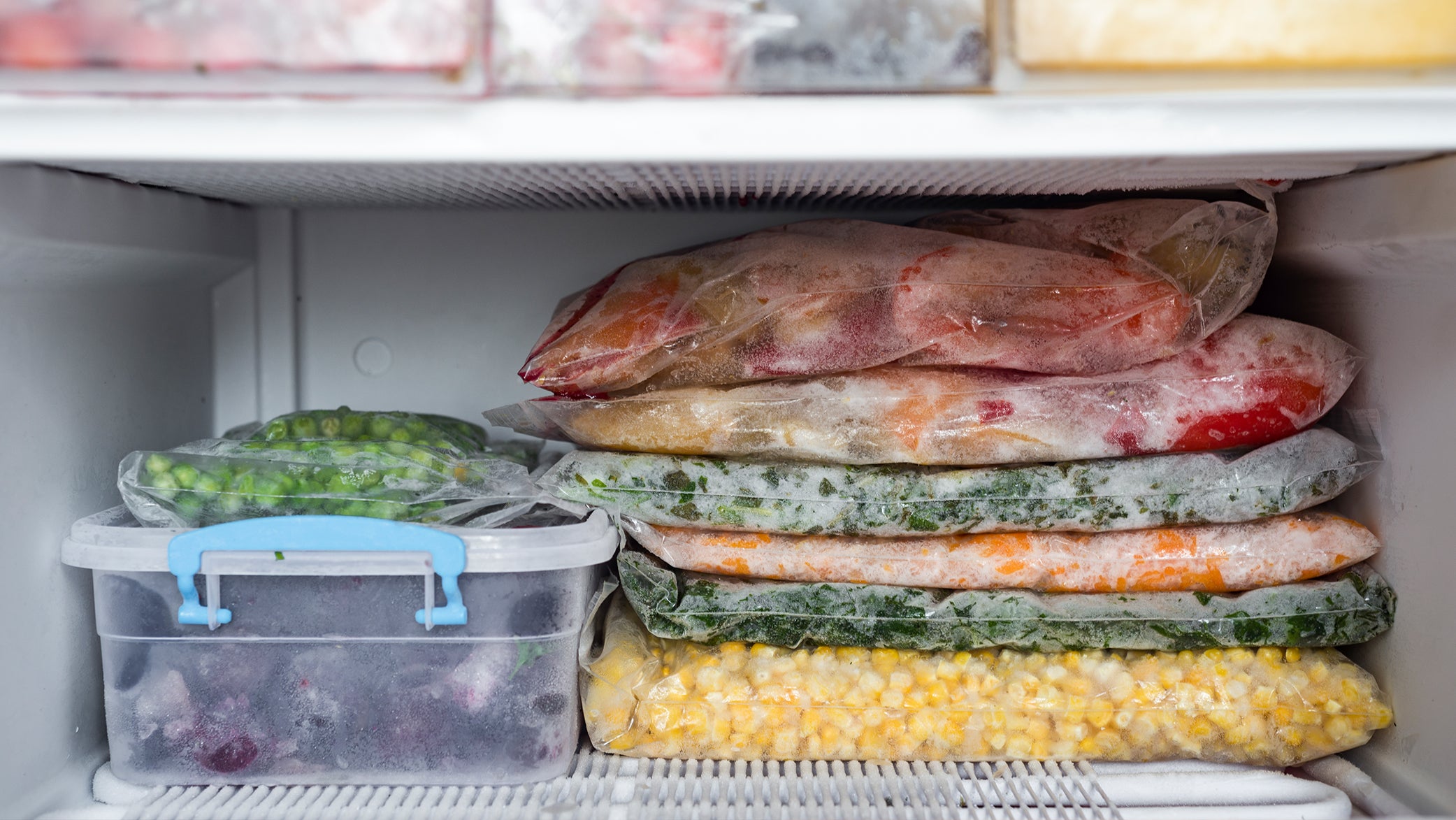Have you ever wondered, “Can I freeze this?” or, “How long can I freeze this for?” Look no further, I’ve got your ultimate guide to making freezer meals so you can maximize your seasonal food purchases for months to come.
1. Use Sealed Containers
Like that horrible nightmare of showing up to school or work in your underwear, no one likes to be exposed. Same goes for food; exposure to cold air in the freezer is the main cause of freezer burn. Avoid freezer burn by storing your foods properly in airtight, freezer containers and bags to limit exposure. Date each container so you never have to wonder when you put it in the freezer.
2. Cool foods before freezing
Make sure you cool foods before freezing. I’ve been guilty of batch cooking chili, dividing and freezing right away, which only led to an improper seal on my Tupperware and major frostbite.
3. Don’t overfill your freezer
To maintain stable air flow, avoid overfilling your freezer. Jam-packing your freezer is like taking a bus, during rush hour, on a hot summer day. The air can’t circulate as it’s meant to which can lead to uneven freezing.
4. Carefully Defrost food
To keep your food safe, defrost the night before in the fridge. For a quicker method defrost the container in a cool water bath. Cool water, not hot. Hot water may start to cook your food.
Once food is thawed use it right away. Do not refreeze thawed foods. If you thawed too much frozen fruit, make a smoothie. If you thawed too many frozen veggies, sauté them up, drizzle with olive oil, sprinkle with spices and serve as a side dish.
5. Try Freezing more
Non-dairy milk, onion, garlic... Can I freeze these? You sure can. Here are five foods you didn’t know you could put in the freezer.
- Non-dairy milk and yogurt: Be mindful of your expiry dates, to not freeze past expiry date. Freeze your non-dairy milk and yogurt, before expiry, in ice cube trays for quick additions to your smoothies.
- Garlic and onion: Peal, chop and store in freezer bags for stews, soups and pasta sauces.
- Bread: Extend the shelf life of bread by storing loaves in the freezer. Toast and use for your favorite sandwiches or top with avocado for a delicious snack.
- Pancakes (wax paper in between): Make your favorite protein pancakes, allow them to cool and store them with a small piece of wax paper in-between. Take out a couple of protein packages, warm over med-low heat on a skillet and top with coconut oil, vegan butter, maple syrup or thawed frozen berries.
- Herbs: Let’s hear it for herbs. They can be frozen too. Another use for ice cube trays is freezing fresh herbs. Learn how with Fresh Herbs 101.
6. Freeze Seasonal Produce
Pack on fall produce. Keep it fresh, even when it’s frozen by buying all your favorite fall produce and use it to make batch meals like Vegan Meat(less) Loaf that you can freeze and store for months to come (typically 2 to 3). Follow the recipe directions for storage timelines.
You can also buy fall produce like brussels sprouts, carrots, and turnips, in bulk. They can be chopped and frozen for future use. Contrary to popular belief, nutrients aren’t decreased with freezing. [annotation]U.S. Food and Drug Administration. (n.d.). Retrieved July 31, 2016, from http://www.fda.gov/ForConsumers/ConsumerUpdates/ucm093704.htm Freezer Facts: Freezing does not reduce nutrients. There is little change in a food’s protein value during freezing.[/annotation]
7. Save scraps for broth
Forget throwing out or composting scraps, they still have tons of flavor waiting to be used! Freeze ‘em. Freeze carrot and cabbage ends, vegetable peels and more in a freezer bag for soup stock.
What’s your top tip for freezing foods?


